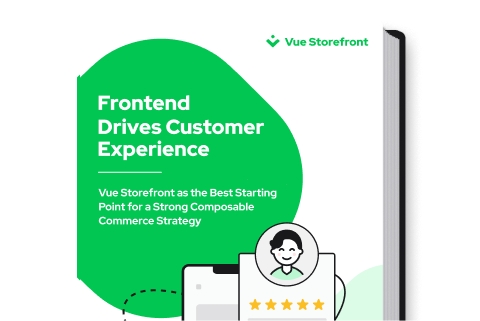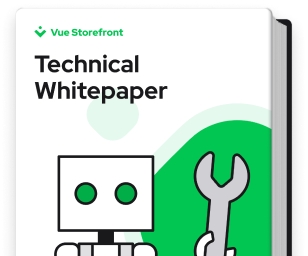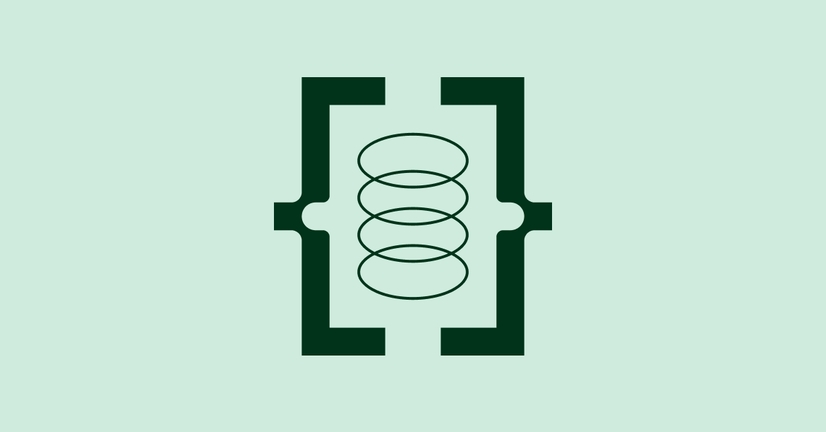Explore by Category:
Frontend
As businesses are focused on clamping down on budgets while increasing revenue to protect themselves against turbulent events, some solutions are proving themselves to be particularly effective. Frontend as a Service (FEaaS) is one such solution.
Superior customer experience is the driving force behind eCommerce success. And since the entire customer journey happens on the frontend, it is no wonder that a strong focus on a performant and money-saving frontend development is enjoying supreme attention currently.
This article will focus on how the collective benefits of a high-code FEaaS solution will save you money and create opportunities to also make more of it at the same time. So, let’s jump right in.
What is Frontend as a Service?
Frontend as a Service (FEaaS) is a frontend solution for composable commerce that allows you to build and customize an engaging, unique, and highly performant frontend for your composable commerce website with just one tool, in a fraction of the time and cost.
What is composable commerce?
Composable commerce embraces headless commerce and is a common term for software architecture, which separates the UI (frontend) from the business logic (backend), and provides the possibility to choose the best-of-breed technologies to build a flexible eCommerce stack.
FEaaS uses cloud-based modules to develop a fast and reliable frontend. This makes it easy for developers to create performant websites without having to worry about hosting or scalability issues. With FEaaS technology, your dev team can build and customize your entire composable commerce tech stack quickly and manage it all from one place.
Pre-packaged Business Capabilities (PBCs), highly performant and configurable UI features, middleware, and hosting are all included.
The microservices architecture with an API orchestration layer of FEaaS is a framework that gives your eCommerce site an entire ecosystem of cloud-native, microservices-based, and API-first composite frontend modules that can be combined into a serviceable solution.
The financial benefits of high-code FEaaS
There are various FEaaS solutions available in the market and it is easier than ever for business owners to build an entire tech stack with various technologies of choice. But, not all solutions are created equal.
You will find no-code, low-code, and high-code FEaaS solutions and you have to make sure that whichever system you build, you get the most value for your money. It’s not only about saving money either, it is about composing a tech stack of choice that will also get you to market faster with a highly customized shop on which you can freely create unique and personalized customer journeys.
To achieve all of the above, high-code FEaaS is the best choice.
eCommerce developers can build, test, and distribute engaging frontend experiences faster, better, and cost-effectively with a comprehensive high-code FEaaS solution. It lets them create optimized, well-tested, performant, and consumer-centric bespoke interfaces without spending months developing a custom-built frontend.
Improved customer experience increases conversions and revenue
One of the most important aspects of driving conversions and revenue for your eCommerce business is providing a great customer experience (CX). Simply put, customer experience is the perception customers have of your brand as a result of their interactions with your company.
Seeing that your frontend is where customers interact with your brand, this is also where you need to ensure optimal speed and delivery to drive conversions and revenue.
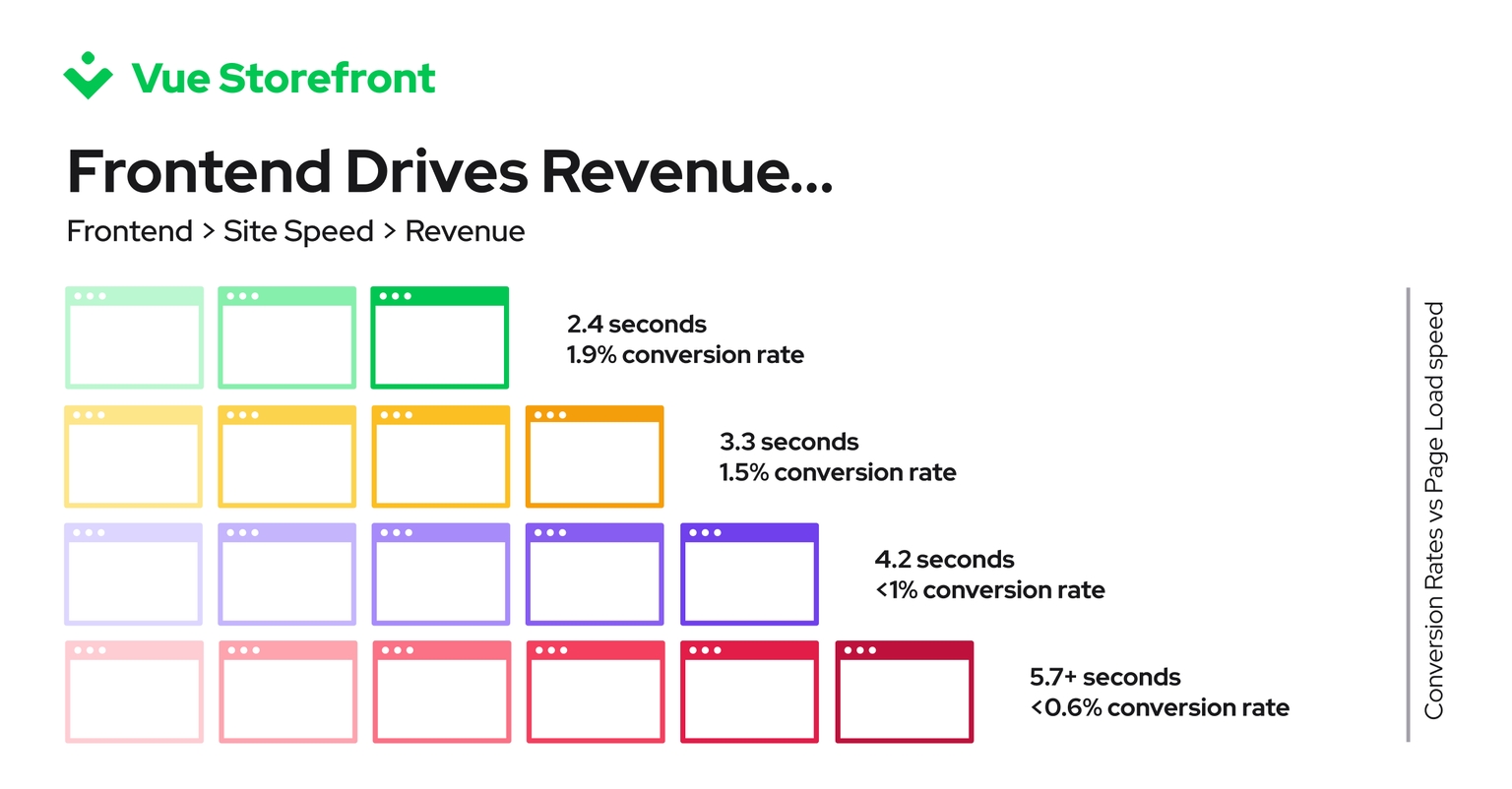
Creating a positive customer experience should be a top priority for any business owner, as it directly impacts conversions and revenue. The goal of CX is to create happy customers who will continue to do business with you and even recommend your products or services to others. Satisfied customers are also more likely to spend more money with your company.
In fact, Bain & Company found that a 5% increase in customer retention can lead to a 75% increase in profits. In modern eCommerce, the first step to improving CX is ensuring your UI is super-fast and responsive.
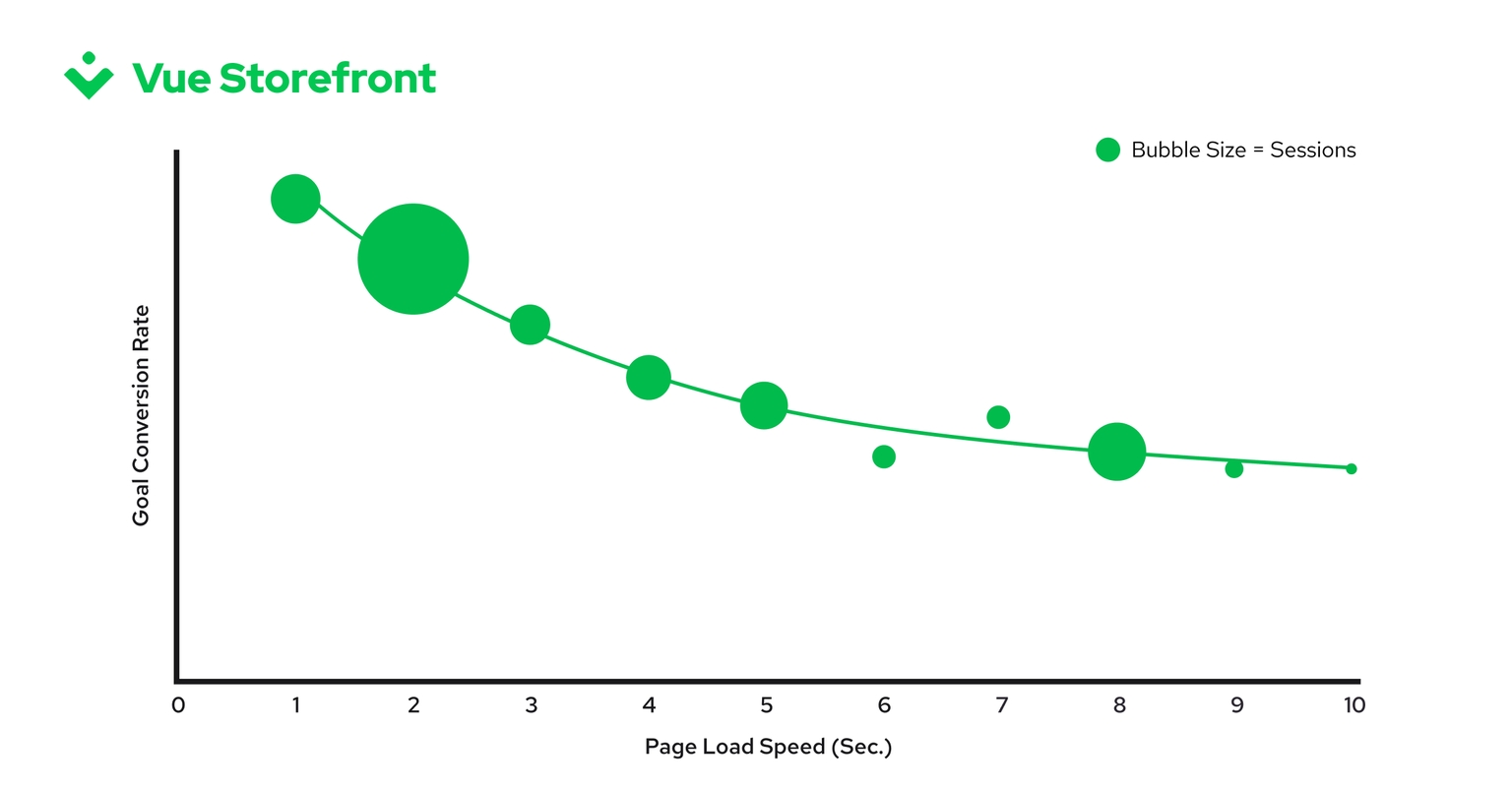
With optimized web performance and omnichannel microservices, high-code FEaaS solutions enhance customer experience. One approach they use to do this is by employing PWA ( Progressive Web Apps ) technologies while building their frontend microservice. The major advantage of PWAs is their super-quick and omnichannel performance, which meets today's consumer demands head-on.
Faster Time to Market = cost savings and higher ROI
Building an eCommerce website is a big undertaking. Not only do you have to worry about the design and functionality of your site, but you also have to make sure it's up and running as quickly as possible.
Why is time to market so important? Because the sooner you can get your site live, the sooner you start making sales. And if you're not making sales, you're not generating revenue.
Faster development times = quicker time to market = increased revenue
Since all the core elements for frontend development are already available to your developers, they can create your website or application in significantly less time and focus on customizing pre-built components instead of building from scratch.
It's important to remember that customers have a lot of choices when it comes to where they shop online. If they don't like what they see on your site, they'll move on to someone else's. That's why it's crucial to make sure your site is ready for launch before you start promoting it.
If you're still not convinced, consider this: according to a study by Forrester Research, every day you delay launching your eCommerce site can add up $2.5 million in lost sales annually. That's a pretty strong argument for why TTM is so important.

Using a comprehensive FEaaS solution can get you to market up to eight months sooner than a custom build, which equates to around $500K in savings on development costs. And, the prebuilt architecture is already optimized for web performance, with a mobile-first approach. The cost and time savings are significant.
Reduced Total Cost of Ownership
When it comes to building eCommerce stores, one of the key considerations for any business owner is the Total Cost of Ownership or TCO. This figure represents the total amount of money that will be spent on a piece of software over its lifetime, including initial development costs, support and maintenance costs, training costs, and more. Here's a closer look at how to calculate TCO for new software developments.
To calculate TCO, you'll need to consider all of the upfront costs associated with your new software development project. These include the cost of licenses, hardware, and any third-party services that will be required. Additionally, you'll need to factor in the cost of any customizations or integrations that will be necessary to get your new software up and running.
Once you have a handle on all of the upfront costs, you'll need to start thinking about Ongoing Costs. These include things like support and maintenance fees, hosting costs, and upgrade costs. Additionally, you'll need to factor in the cost of user training—both for new employees who will be using the software for the first time and for existing employees who will need to learn how to use the new software in addition to their current duties.
When it comes to calculating TCO for new software developments, it's important to consider all of the potential costs—upfront and ongoing—that might be incurred. With a clear understanding of all of the associated costs, you can make informed decisions about which software development projects are worth undertaking and which are not.
When in doubt, always err on the side of caution and consult with a qualified software development professional who can help you calculate TCO for your specific project.
Businesses should be prepared for the following factors that will affect the TCO of new technologies:
- Enhancements to the eCommerce system
- Maintenance
- Third-party technology partners’ upgrades or changes
- Backend changes to satisfy the company’s needs
- To keep up with the client demands, you should develop new user experiences.
With legacy platforms, making even small changes can be costly because of the inflexible architecture. On the other hand, composable solutions provide more adaptability and lower overall change costs by around 40% when compared to inflexible legacy platforms.
Creating your own storefront from scratch can take up to a year and cost upwards of $500,000. It's time-consuming, costly, and complex. Having a Frontend as a Service solution available to you in the form of composite solutions may save you months in development time and hundreds of thousands of dollars in expenses to get to market.
Great flexibility
The prebuilt frontend components are fully customizable, which gives developers full freedom and flexibility to tailor it to your customer needs and to control the end effect.
One of the significant advantages of using a FEaaS solution is that it helps future-proof your store by remaining agnostic. The flexibility to change any of the vendors in the tech stack when needed remains with the business owner. This allows for superb customization of your store as and when needed. And finally, ownership of what you create remains with you, not the vendor.
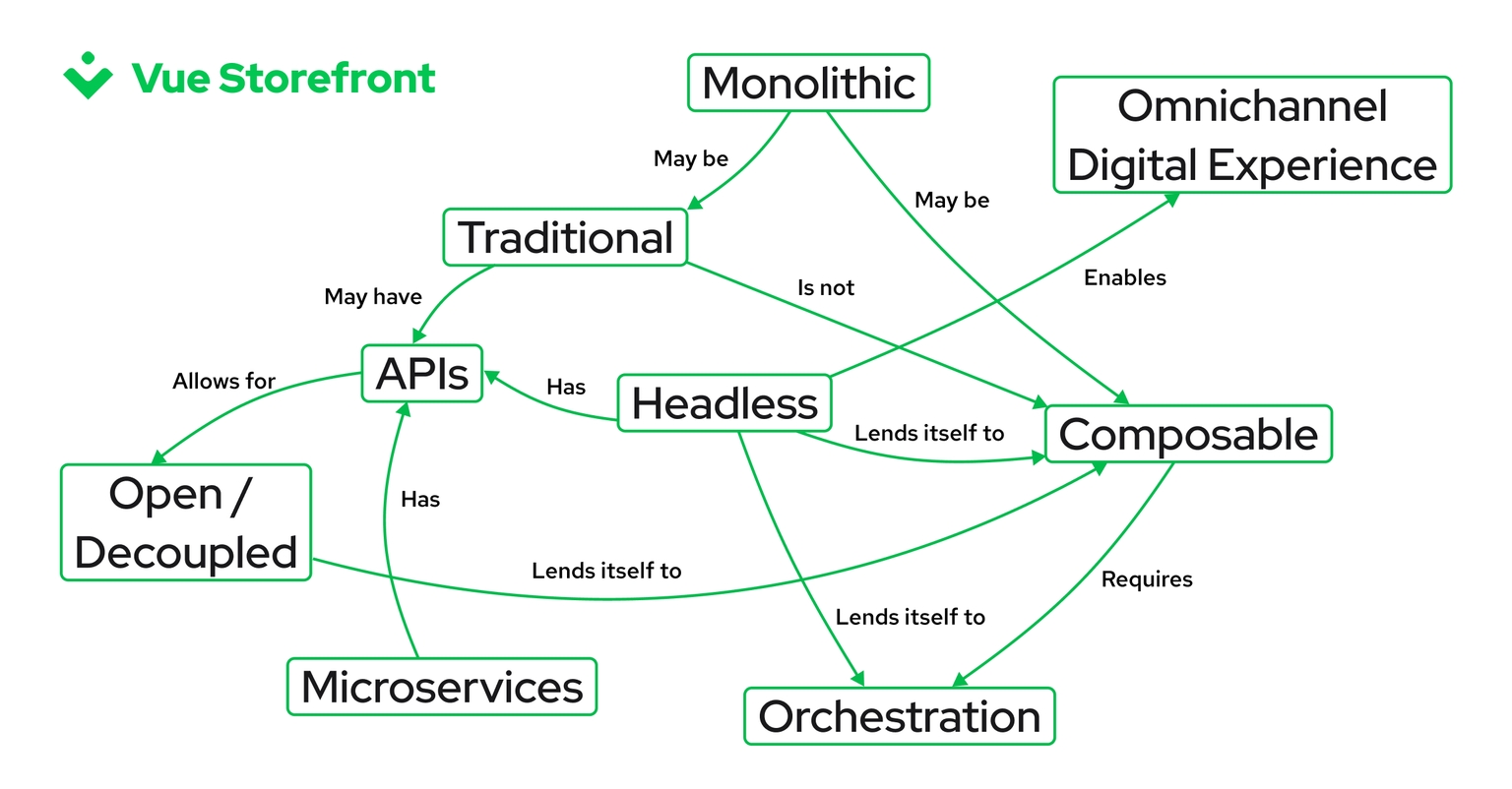
Improved web performance
Time is of the essence in online business. 10 years ago, Amazon found that every 100 milliseconds of latency cost them 1% in sales. On their side, Google discovered that an extra half second's search result generation time caused traffic to drop by 20%.
But that’s not all: According to Kissmetrics, a one-second delay in the page response can result in a 7% reduction in conversions. This percentage translates to $2.5 million in lost sales per year for an eCommerce site generating $100,000 per day. That's a lot of money down the drain.
To estimate how much lost revenue you might endure from your website going down, divide your total annual online revenue by the number of minutes in a year (525,600) and multiply by the number of downtime minutes:
Downtime loss ($) = Annual revenue/525,600 X downtime minutes
Not to mention, this calculation only considers the direct loss of sales. The time spent by your teams fixing the issue, along with damage to brand perception and search engine rankings, will raise the number even higher.
The headless modular approach of FEaaS means that you have a reduced risk of system failure. Each microservice is independent, meaning that if one fails, the entire system won't.
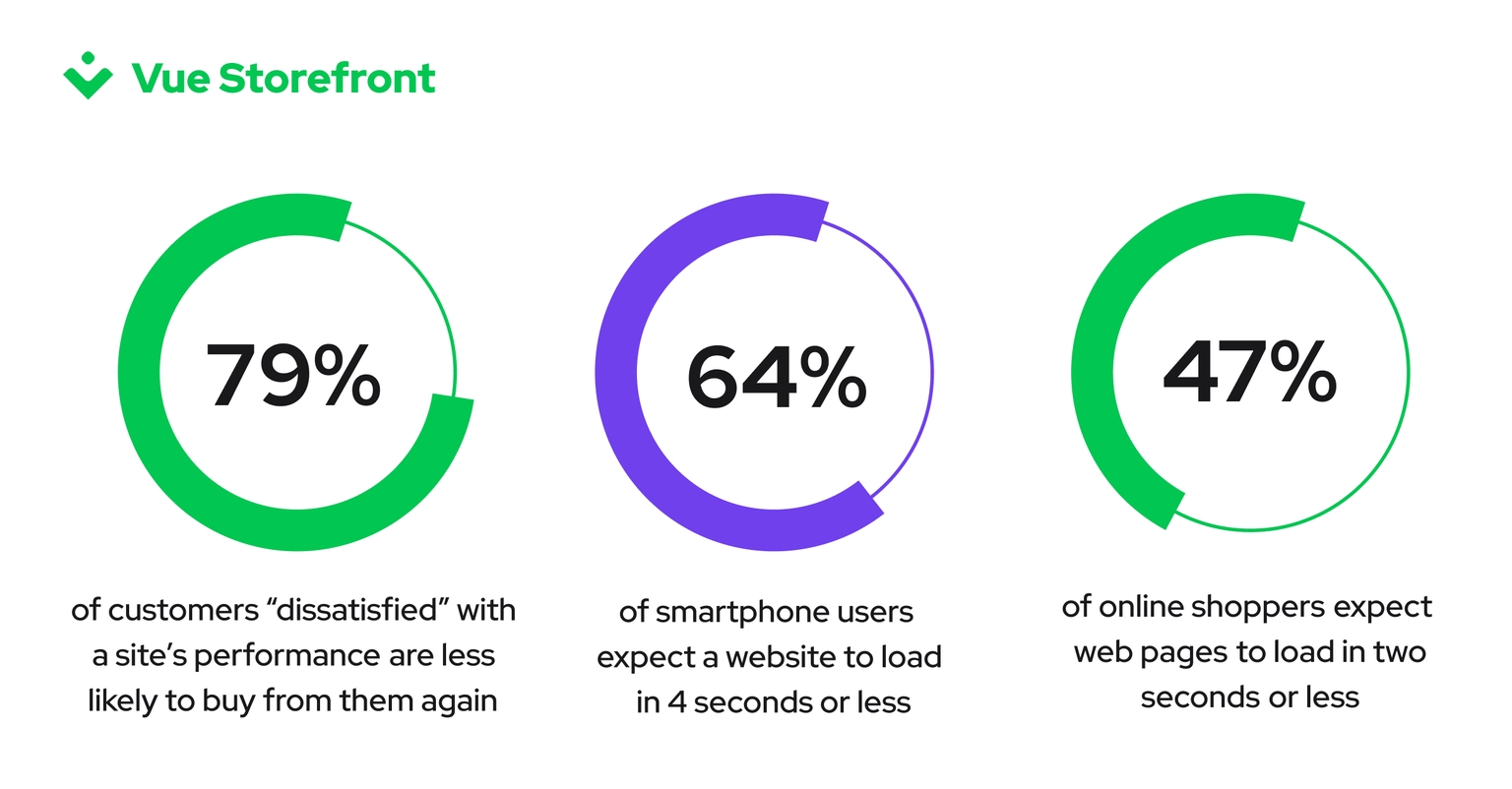
Customization and scalability = improved CX
Easy implementation of new or improved functions - You may realize that your commerce platform requires a new function. The composable approach allows your developer (or your marketers) to add the required features in no time.
Gartner predicts that companies using a composable approach will be 80% faster in the implementation of new features than their competition.
The modular approach allows you to scale a single function or module without affecting others. This translates to fast and efficient scalability. You can also modify or service any given part of the website when not scaling. This flexible framework allows increased serviceability.
As with Software as a Service, you only pay for the modules you need. This translates to an affordable website that doesn't leave you paying for unwanted extras.
Lower hosting costs
A high-code FEaaS provider will reduce your overall spending by offering a well-managed and comprehensive cloud hosting and infrastructure solution.
Cloud hosting is a type of internet hosting that uses distributed resources from a network of computers, rather than relying on a single server. This approach offers several advantages over traditional hosting methods, including improved scalability, reliability, and flexibility.
Perhaps the most significant advantage of cloud hosting is its scalability. When using a traditional hosting model, businesses often have to purchase additional servers or upgrade their existing ones to accommodate increased traffic or new applications. With cloud hosting, however, businesses can simply add more resources as needed, without incurring the cost of buying new hardware.
In addition, cloud hosting provides greater reliability by distributing resources across multiple servers. If one server goes offline, the others can take over, ensuring that applications and websites remain accessible.
Finally, cloud hosting offers greater flexibility than traditional methods, allowing businesses to quickly and easily deploy new applications without having to worry about compatibility issues. As a result, cloud hosting is increasingly becoming the preferred choice for businesses of all sizes.
Ready to save and make some money?
Alokai is a Frontend as a Service (FEaaS) for composable commerce that delivers custom storefronts at the fraction of cost and time. It helps to achieve lightning-fast page loads for better conversion rates and higher revenue.
Download the whitepaper to learn how Alokai can help you thrive in a downturn economy
Share:
Share:
Frequently asked questions
More in Frontend
Ready to dive in? Schedule a demo
Get a live, personalised demo with one of our awesome product specialists.



















